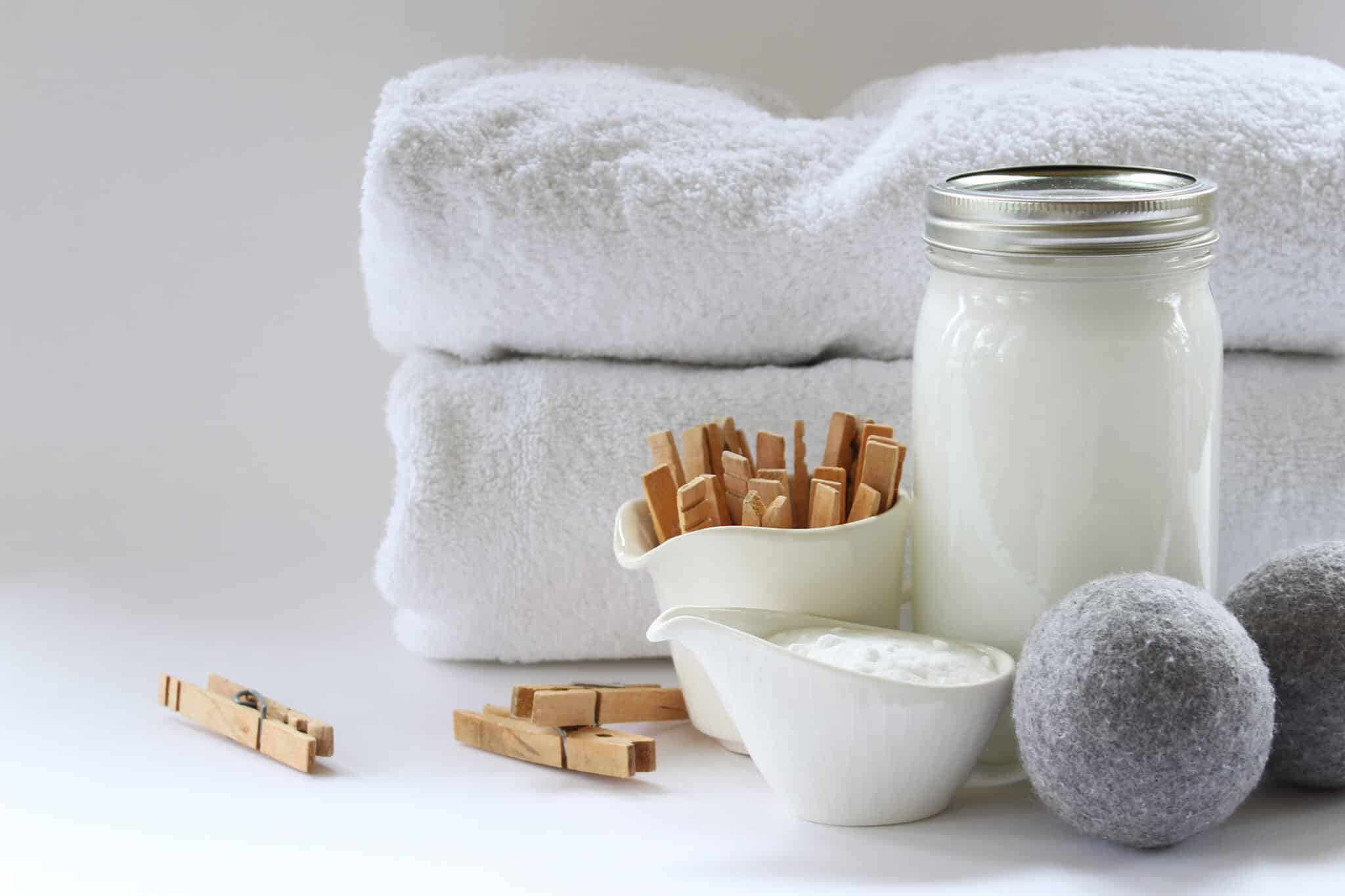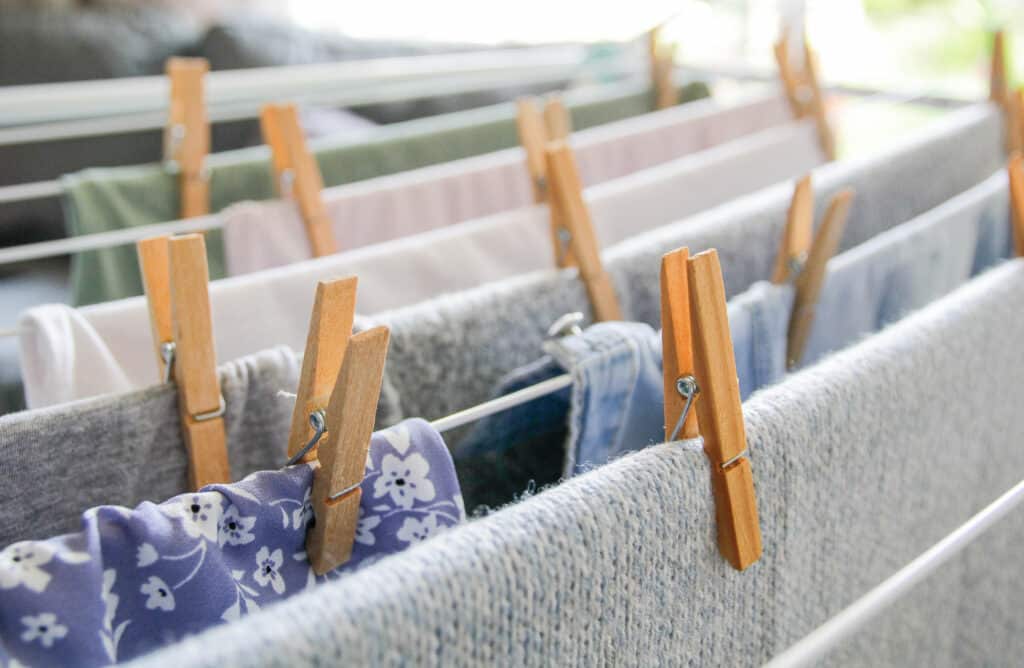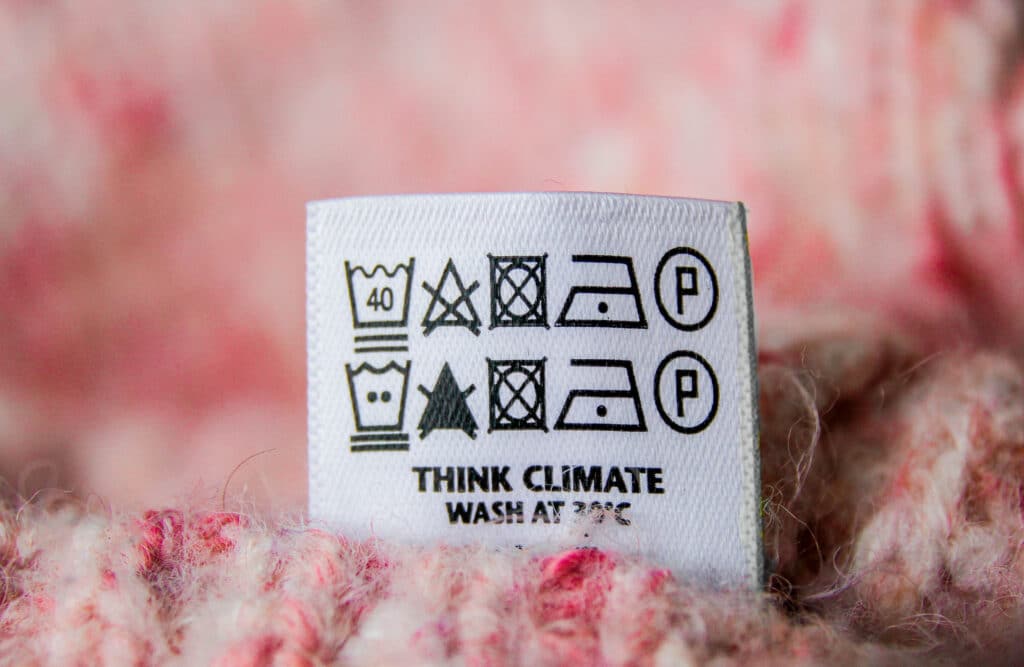Sustainable Home Swaps 101: How to Make Your Own Laundry Detergent

 Why you can trust us
Why you can trust us
Founded in 2005 as an Ohio-based environmental newspaper, EcoWatch is a digital platform dedicated to publishing quality, science-based content on environmental issues, causes, and solutions.
Laundry is an unavoidable task. Whether you use a laundry service, do it at home, or take it to the laundromat, clothes get dirty and need to be washed. The typical American family does 300 loads of laundry a year, each of which requires water and energy – and detergent.
Walking down the laundry aisle of the grocery store, the shelves are lined with colorful detergent bottles of thick – and possibly unrecyclable – plastic. Not all plastic that makes it into the recycling bin is actually recycled either; over the past 40 years, it’s estimated that less than 10% of recycled material was actually recycled, and recent studies are now nearly halving that estimate. Ultimately, 700 million of those colorful plastic detergent jugs are thrown away every year.
Most traditional laundry detergents also contain chemicals – including dioxane, bleach, and ammonium sulfate – that impact both human health and the environment. Phosphates in these products enter waterways and cause harmful algal blooms, and the surfactants that help remove dirt and stains from clothing are toxic to aquatic life. Scented detergents contain even more hazardous chemicals and volatile organic compounds (VOCs).
Homemade detergent, on the other hand, doesn’t contain these harmful chemicals. Making it yourself also presents the opportunity to avoid the dyes and fragrances in traditional laundry products that can irritate sensitive skin. You can also choose which ingredients to buy based on the recyclability of their packaging, and avoid those huge detergent jugs.
Typical Ingredients

There are dozens of recipes and methods for washing textiles, but most contain a combination of the following ingredients.
Borax
Also known as sodium borate, sodium tetraborate, or disodium tetraborate, borax is a common component in cleaning solutions and laundry detergents. However, one of the key ingredients of borax – boron – is mined in open-pit mites, which contribute to air and water pollution and cause serious damage to the local environment. Boron can also irritate the eyes and skin and has been linked to hormone disruption, so consider wearing gloves and a mask when handling it. The following recipes include a few borax-free alternatives if you’d rather leave it out.
Washing Soda
While not the same as baking soda, washing soda also has cleaning capabilities. It contains sodium carbonate, which softens water to allow other ingredients in the detergent to effectively clean textiles. Washing soda can sometimes irritate skin, so wear gloves if you’re handling it directly.
Baking Soda
Most homemade detergents won’t act as efficiently as store-bought stain removers; they don’t contain the active enzymes that are used to break down specific stains. However, baking soda is a very effective cleaning product, and adding it to your detergent can help boost its stain-removing power.
Castile Soap
Castile soap comes in both liquid and solid form, and differs from traditional soap in that it’s made from vegetable- or other plant-based oils rather than tallow or animal fats. It’s easy to find in most retail stores that carry body products, although it is sometimes more expensive than traditional soaps.
Soap Flakes
While you can just buy them at the store, take a bar of soap and grate it against a cheese grater, and voila, you’ve got soap flakes! Alternatively, break down a bar of soap in a food processor, then add the rest of the dry ingredients to mix everything together.
Essential Oils
If you like scented detergent, add a couple of drops of essential oils to your homemade detergent. Remember, a few drops go a long way: if you’re making liquid detergent, a whole gallon only needs 20-30 drops for a rich scent.
Dry Soap
About a quarter cup of dry detergent per load is usually sufficient in a typical washer (depending on the load size). A high-efficiency washer will use much less; try 1-2 tablespoons depending on how full the machine is.
Dry detergent will last for quite a long time, as long as it’s stored somewhere dry in a sealed container, like an upcycled glass jar. If moisture starts building up in the detergent, it’ll start to get clumpy and might leave residue on clothes.
With Borax
First, grate a bar of soap and measure it out. Per one part soap flakes, add two parts borax and two parts washing soda. Mix thoroughly, and add 1 part baking soda to increase stain-removing power, if desired.
Without Borax
DIY detergents without borax will generally require salt and/or baking soda as alternative cleaning agents. Adding a cup or so of white vinegar during the rinse cycle will also help remove undesirable scents from clothing. Mix equal parts kosher salt, baking soda, washing soda, and soap flakes, and you’re ready to go. If using cups as a measurement, one grated five-ounce bar of soap is usually sufficient.
Liquid Soap
If you prefer a liquid soap, try one of these recipes (either with borax or without). Use a ¼ cup as a measuring scoop for regular loads in a conventional washing machine.
With Borax
First, mix together the dry ingredients: a 1:1 ratio of borax to washing soda. Add 1 part liquid castile soap and mix well. Next, mix in 8 cups of boiling-hot water, then 8 parts of cold water. For a scented detergent, add a dozen or so drops of essential oils. Let the solution cool completely before using.
Without Borax
For a borax-free liquid detergent, combine 28 parts boiling-hot water with 2 parts baking soda and 1 part salt. Once that’s dissolved, add 2 parts liquid castile soap. Make sure the solution is mixed very well and cools completely. If using cups as a unit of measurement, this makes about two gallons of detergent. To help the ingredients dissolve, you might want to make the detergent in batches, mixing a quarter of the ingredients together at a time.
Other Sustainable Laundry Practices

Even if homemade detergent isn’t in your wheelhouse, there are plenty of other ways to minimize the impact of your laundry routine.
- Try detergent sheets. This dehydrated detergent comes in pre-measured sheets that you can toss right into the laundry drum – and, they’re usually packaged in recyclable cardboard boxes.
- Use a Guppyfriend Washing Bag. In every wash, synthetic fabrics like acrylic, nylon, and polyester shed hundreds of thousands of microplastics per wash. Microplastics are found virtually everywhere on Earth: in the air, our organs, and the deepest parts of the ocean. A 2017 report found that 35% of all ocean microplastics come from synthetic fabrics. When washing these fabrics, put them inside a Guppyfriend to prevent the release of small plastics into the water. Laundry balls like the Cora Ball keep microfibers from breaking off of clothes in the wash
- Wash with cold water. Less energy is used during a cold wash, since no water is heated. Cold water is generally better for clothes anyway, meaning your pieces will last longer if washed on a colder setting.
- Don’t wash too often. Know how often to wash items: 3-4 wears for jeans, 1-2 wears for shirts. Washing too frequently is unnecessary (unless, of course, something is really dirty) and a waste of resources.
- Wash only full loads, or make sure you’re using the right size setting on the machine for a smaller load.
- Hang dry. Don’t use the power of the dryer when you can avoid it. If you do, use the moisture meter to stop the machine automatically when the clothes are dry.
- Remove lint from dryers so they can work as efficiently as possible.
- Invest in efficient machines. Look for the ENERGY STAR label on new washers and dryers. These machines use 25% less energy and 40% less water than traditional washers, ultimately saving you money over time.
Subscribe to get exclusive updates in our daily newsletter!
By signing up, you agree to the Terms of Use and Privacy Policy & to receive electronic communications from EcoWatch Media Group, which may include marketing promotions, advertisements and sponsored content.

 233k
233k  41k
41k  Subscribe
Subscribe 




